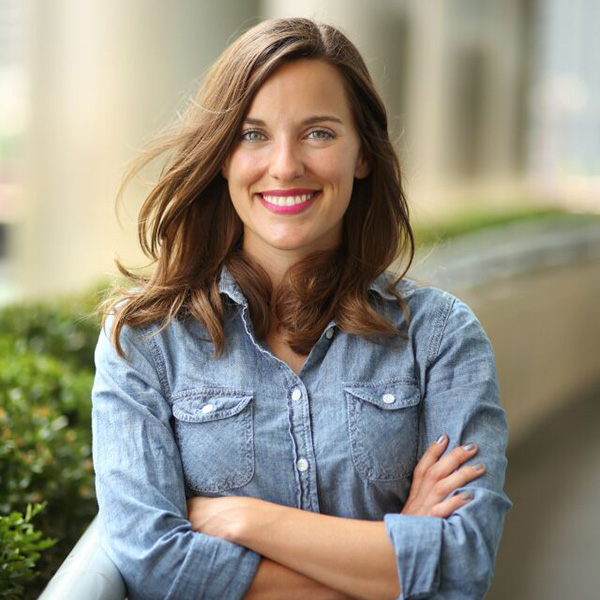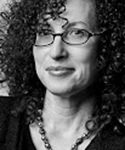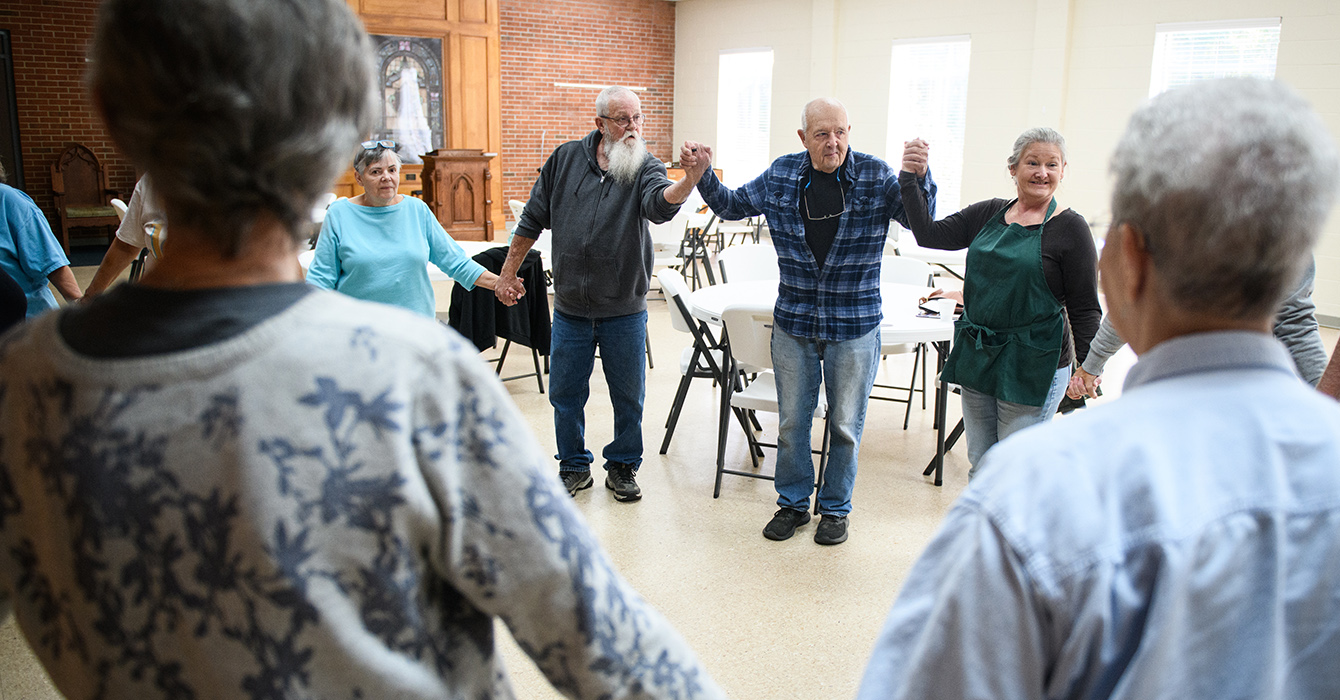When Sally Osberg speaks about social entrepreneurship at national conferences or to the news media, she does not talk about “going to scale.” Rather, she intentionally focuses on “results at scale.” Why? So social entrepreneurs will think beyond organization size.
 “We think ‘going to scale’ means the size of an organization -- how big you are, how many employees you have, how many offices you have, how big your footprint as an organization is and how large your budget is,” said Osberg, president and CEO of the Skoll Foundation. “But there is great evidence that innovations can scale or impact can scale without organizations [being or becoming] behemoth. ...
“We think ‘going to scale’ means the size of an organization -- how big you are, how many employees you have, how many offices you have, how big your footprint as an organization is and how large your budget is,” said Osberg, president and CEO of the Skoll Foundation. “But there is great evidence that innovations can scale or impact can scale without organizations [being or becoming] behemoth. ...
“I don’t think that scaling and organizational size are necessarily correlated.”
Jeff Skoll, the first president of eBay, established the Skoll Foundation in 1999 to identify and support social entrepreneurs and innovators through grants, scholarships and an awards program. The California-based organization also established the Skoll Centre for Social Entrepreneurship, a research and academic center, at the University of Oxford’s Saïd Business School. It also operates Social Edge, an online community that allows social entrepreneurs to interact with each other, and partners with the Sundance Institute to run a program that aims to raise awareness about social entrepreneurship through nonfiction storytelling.
Before joining the Skoll Foundation in 2001, Osberg was founding executive director of Children’s Discovery Museum of San Jose.
She spoke with Faith & Leadership about results at scale, the role of storytelling in social entrepreneurship, and how to carry out a founder’s vision. The following is an edited transcript.
Q: Explain the difference between “going to scale” and “results at scale” and why you emphasize the latter.
The difference goes back to the paradigms we have in our heads. We think “going to scale” means the size of an organization -- how big you are, how many employees you have, how many offices you have, how big your footprint as an organization is and how large your budget is. But there is great evidence that innovations can scale or impact can scale without organizations [being or becoming] behemoth.
I worked for many years in the children’s museum field. A curator at a traditional collections-based museum, the Brooklyn Children’s Museum, developed the first interactive museum at the turn of the century. Her name was Anna Billings Gallup, and she had this insight that you could put collections into the hands of children and they would have a more meaningful museum experience. That idea percolated in the field and was picked up by others -- by the Boston Children’s Museum in the 1920s and then the Indianapolis Children’s Museum. Folks who went to those institutions were very excited about them, and they went back to their communities and created their own children’s museums over time. In the 1990s, children’s museums were scaling phenomenally. Today, there are hundreds of them all over the country and hundreds of them all over the world.
You can trace the thread back sometimes, but oftentimes it doesn’t go back neatly to one person or one institution. You can see the evolution of ideas and the role of different organizations over time.
Civil rights is another example. It probably starts in the Enlightenment, but then you have the abolitionist movement in the 19th century in England. You have the role of the Quakers, and you have institutions being formed in the United States, like the NAACP, and you have charismatic leaders like Martin Luther King Jr. You have this whole sequence of ideas and new institutions and movements and defining moments. Ultimately, you get change, but at a progression over time.
Would you call that “results at scale”? I would say that when people who didn’t have the right to vote now have the right to vote, that’s social value creation and that is results at scale.
Q: What does this mean for organizations trying to scale?
I don’t think that scaling and organizational size are necessarily correlated. Innovations can scale through networks and partnerships, and they can do so, often, more effectively than any one venture on its own can.
I was in a meeting the other day where a colleague referenced the fact that only a handful of nonprofits have budgets that are bigger than $50 million.
You can have very big organizations that are essentially lumbering bureaucracies, and you can have smaller organizations that are very adept at partnering.
For example, an organization like Kiva works with microfinance institutions (MFIs) all over the world. It has a loan portfolio that now exceeds $200 million. It’s reaching more than half a million microentrepreneurs all over the world using an Internet platform it innovated and developed, but it couldn’t do that work without these partnerships with the MFIs. It depends upon that network to be able to get this funding that comes from largely developed-world investors. Some are investing $25, some a couple of hundred dollars, some even into the thousands of dollars. But they need that network of institutions to help them be effective.
The scale of the impact can be accelerated by an organization or by a charismatic social entrepreneur, but it doesn’t necessarily depend upon that organization going it alone.
The home computer revolution is a good example. It wasn’t just Apple and it wasn’t just IBM. It was an innovation that was picked up in the marketplace and was scaled through myriad organizations and their efforts.
Q: How do you build partnerships?
Partnerships begin with relationships and require common interests, and they get built over time between people. Trust, mutual interests and leveraging what you can do together is what sustains them.
Our Sundance partnership began with [founder Jeff Skoll’s] relationship with Robert Redford and then my relationship with Ken Brecher. Ken was running the Boston Children’s Museum when I was running Children’s Discovery Museum of San Jose; when I went into philanthropy, he was running Sundance, and we joined up again. And Sandy Herz [Skoll’s director of strategic alliances] on our team has taken on the ongoing investment of time, energy and resources in building relationships.
A lot of partnerships and strategic alliances can be marriages of convenience. The ones we aspire to are true partnerships that create value that neither of us could create on our own.
Q: The Skoll Foundation’s motto is “invest, connect and celebrate.” What can other organizations learn from how Skoll put that motto into practice?
There are two dimensions to the way we came up with that. The first dimension is simply tracking to Jeff and his interests, and Jeff believes in the power of storytelling. He was interested in media as a means of telling stories and communicating information in ways that would move people to take responsibility for building a better world, whether as contributors or as agents of change themselves or as volunteers.
The second piece was very disciplined and strategic. When we were building the foundation, Jeff insisted that we work on strategy and identity at the same time. Part of that meant going out to the market and seeing who else was doing this work with social entrepreneurs so that we wouldn’t replicate that work. We learned that Ashoka and Echoing Green were doing work with early-stage social entrepreneurs, and that Ashoka was in the developing world and Echoing Green primarily in the United States. We learned about the need of many of those social entrepreneurs who have moved past the early stage; we saw a niche to invest in later-stage social entrepreneurs.
We translated “connect” and “celebrate” into operating programs. Our two principal “connect” programs are the Skoll World Forum and Social Edge, an online platform for social entrepreneurs to connect with each other all over the world.
The “celebrate” work evolved into partnership with content creators, filmmakers and distributors. We partner with PBS, for example, and with Sundance in trying to seed the filmmaker community with ideas about social entrepreneurs. At the Sundance Producers Conference at the Sundance Film Festival each year, we bring together social entrepreneurs and filmmakers so they can get to know one another. Out of that come some pretty interesting stories and projects. That partnership strategy and the work with media is designed to result in stories that get distributed so that people can see them, learn about the work and opt in.
Q: You have said that your job is to “create DNA that is so powerful in this foundation that no matter what happens in the future it will live and breathe who Jeff Skoll is.” How do you carry out a founder’s vision?
I think it’s really important for CEOs like myself to channel those values and those principles into the people, the processes and the governance methodology, so that every person who joins the team aligns with the vision and understands our purpose and is true to the principles that the foundation was created with.
There are many principles that Jeff has embedded in the foundation that we enact in the way we work, and we’re very clear on what those are. We build our values into our performance evaluation process. We build them into our screening for future employees. The board is aligned around those values. We live and breathe them; and as long as we hang on to those values, we won’t go wrong.
Q: You’ve mentioned that storytelling is one of Jeff Skoll’s values. What role can it play in social entrepreneurship?
It’s a lot easier to wrap your head around a story than it is around a dry data sheet. People argue over what’s more important: social enterprise or social value creation or social innovation. I like to get back to basics and remind us that innovation and entrepreneurship start with human beings, and those human beings make a decision at some point.
One of my friends once called social entrepreneurs “human tipping points.” I love that because they reach a moment when they decide, “If not me, who? If not now, when?” And they just have to do it. They commit themselves in a powerful way to drive change where they see tremendous opportunity.
Victoria Hale, who founded OneWorld Health, the world’s first nonprofit pharmaceutical company, was a very successful pharmaceutical scientist. She understood that big pharma had all this latent capacity to treat illnesses and disease in the developing world, except that developing markets couldn’t afford the drugs. So big pharma had no interest in capitalizing on those drugs that it had developed.
She created this organization to bridge that gap, but she came to that decision in a taxi. She was talking to a taxi driver when she realized that it was time and that she had what she needed to put this idea into play.
Q: You earned your undergraduate degree in English and your master’s in literature. How did that prepare you for the role you play today in supporting social entrepreneurs?
One of the reasons Jeff and I connected is that we were both influenced by powerful stories. He was reading George Orwell and Aldous Huxley, and I was reading Charles Dickens and biographies about Jane Addams and Florence Nightingale. We both recognized that much of who we are was shaped by those writers. Charles Dickens was probably one of the greatest agents of social change ever to walk on the face of the earth. And in many ways, what Jeff is doing is very much in that spirit. I think literature and the humanities generally give you a way of thinking about the world, of making connections, and of understanding the power of human motivation.
At the end of the day, we’re all human beings acting out our own stories, but our stories are connected to everyone else’s stories. What is going on in Egypt is going to influence my life and my world, and it’s certainly going to shape the world that my grandchildren are going to grow up in. I like to think that my training in the liberal arts helps me understand that and gives me a special affinity for the role of social entrepreneurs in driving toward a better world.






